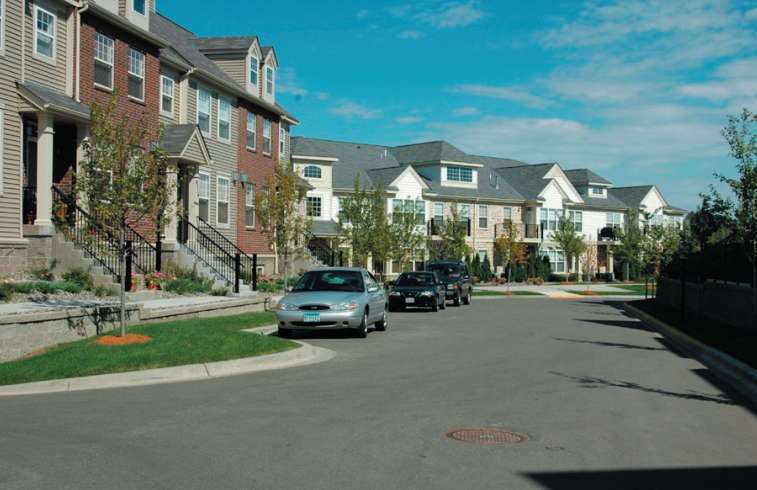For advocates of less restrictive building regulations, especially in high-cost cities where more homes might help bring down housing prices and create more equitable, diverse neighborhoods, state governments often seem like the best bet. At a local level, for reasons we’ve explained before, the politics are incredibly difficult—not least because local elected officials represent nearly all the people who will see the potential downsides of new development, but not the people who stand to benefit by moving into the area once new housing exists. It’s not an accident that places where states have more power over development policy tend to be less segregated.
Still, it’s not as if states around the country are jumping at the opportunity to revolutionize urban development. So two measures that are moving forward in California and Massachusetts—two of the classic “shortage of cities” states—are worth an optimistic look.

In California, Governor Jerry Brown has proposed changes to the California Environmental Quality Act to make it easier to build affordable housing. CEQA mandates an extra layer of local review and discretion over development proposals—a kind of mini-environmental impact statement—even if those proposals meet all existing local zoning requirements. In effect, CEQA eliminates the kind of “as-of-right” development that exists nearly everywhere else in the country, and allows project opponents to tie up routine projects that otherwise meet local zoning codes in months or years of additional review.
Brown’s proposal would exempt projects from CEQA if they 1) meet existing local zoning rules and 2) include a low-income housing set-aside as part of the proposal. Local governments would retain discretion in the form of their zoning codes, but would lose the additional layer of CEQA for projects that include substantial low-income housing. The reaction from many local politicians and residents, predictably, has not been positive, and negotiations in the state legislature are likely to continue for months.
Meanwhile, this month the state Senate of Massachusetts passed a different bill that, in some ways, is bolder: rather than leaving zoning entirely up to local governments, as Brown’s bill does, the Massachusetts proposal would allow accessory dwelling units, or backyard cottages, on the same lots as single-family homes without requiring a special permit, mandate that local governments zone some of their area for multi-family buildings at a minimum zoned density of 15 housing units per acre (or 9,600 per square mile) in urban areas.

While much of the housing debate nationally has focused on local policies like inclusionary zoning, which tends to produce token numbers of below-market units, or community land trusts, which have proven very difficult to scale up, these sorts of state-level policies were a major battleground in the last generation of housing battles in the fair housing fights of the late 1960s and 70s. Massachusetts, in fact, helped lead the charge with the so called “anti-snob” bill, passed in 1969, which allowed a state board to override local zoning codes if it determined that less than 10 percent of the homes in that municipality were affordable to moderate-income households. Studies have suggested that the law, called 40B, has produced a significant proportion of the low-income housing in Massachusetts in the last several decades without a negative impact on market prices. Another major state fight, called Mount Laurel, began in the New Jersey court system in the 1970s, and similarly attempted to mandate the construction of affordable housing in high-cost municipalities, regardless of their local zoning. Those rulings remain embattled, however.
The battle to establish strong state policies and guidelines that will facilitate more housing supply at the local level promises to be a long one. As the experience of Somerville, Massachusetts, shows, the constraints on development have grown by the steady accretion of individually well-intended by cumulatively stifling measures. Even jurisdictions that nominally allow affordable units like granny flats, impose so many other conditions on their construction that they simply become uneconomical. Granola Shotgun relates the story of how the cost of permits, sewer connection fees, and off-street parking requirements effectively amount to a poison pill that makes it impossible to actually build technically permissible accessory dwelling units.
Still, state-level policies that both encourage or require the construction of below-market housing while potentially increasing production of market housing as well, helping slow the growth of market prices, potentially carry a much greater impact for affordability than local policies like inclusionary zoning. Advocates in other states may want to look to what’s happening in California and Massachusetts now—as well as to the previous generation of affordable housing fights—for breakthroughs beyond the current round of local fights.
